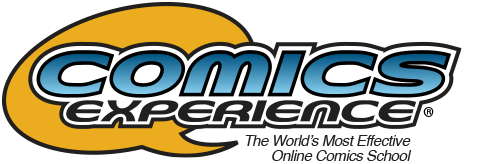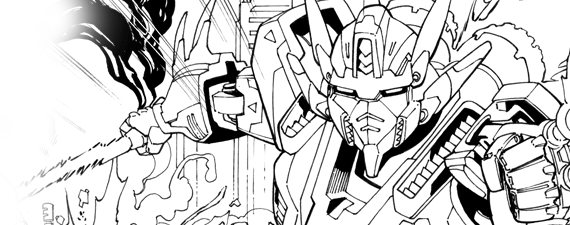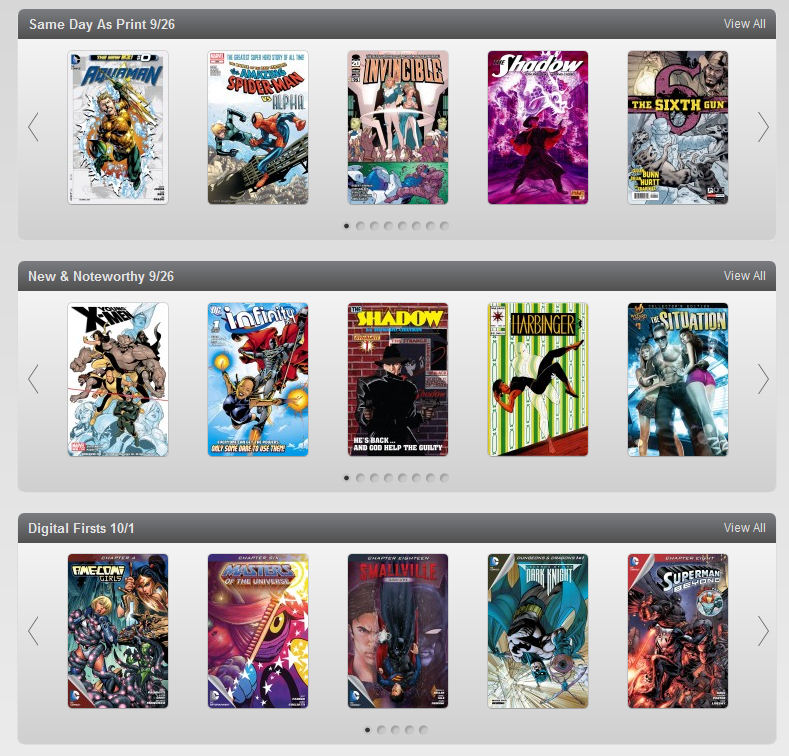 ComiXology co-founder John D. Roberts joined the Comics Experience Creators Workshop earlier this year, to discuss ComiXology Submit, and the rise of digital comics.
ComiXology co-founder John D. Roberts joined the Comics Experience Creators Workshop earlier this year, to discuss ComiXology Submit, and the rise of digital comics.
During the session, Roberts discussed techniques for writing comics that are designed with the tablet reader in mind.
Roberts noted that when ComiXology started, their catalog consisted almost entirely of print books being converted to digital readership.
Now, he said, “we’re starting to see people who are using digital as their first distribution method, or they’re making their comics exclusively for digital. But they’re still thinking about it in print terms. They’re still thinking about how it needs to look great in print.”
But Roberts said that for many of these comics, their initial readers will be viewing the comic on a tablet, not in print. And the creators need to think about these “iPad people,” and start making creative decisions based on their reading experience.
For example, Roberts said that even on his iPad mini, he can read most digital comics in full-page format, without resorting to panel view. The only time this becomes difficult, he said, is when the font is not designed for digital viewing.
Roberts said creators should consider using an all-caps font style, to avoid lower-case letters.
“Also, think about the font size,” he said. “Maybe bump it up a point or two, so there’s really no problem reading it on a tablet.”
DOUBLE-PAGE SPREADS
Roberts also recommended that comics creators stick to single pages in their layouts.
“People aren’t going to like to hear this, but double-page spreads really don’t work well on a tablet,” he said. “When you move from portrait view to landscape view, it can be a little jarring.”
Roberts predicted that as digital comics become more popular, “we’re going start seeing the double-page spread go away.”
Many digital creators make their books available for 99 cents — the lowest price-point allowed on ComiXology. But Roberts said he advises against this.
If a comic is 99 cents, he said, the price can never be reduced, and there is no incentive for a consumer to buy, unless they are ready to read the book at that exact moment.
By contrast, he said, a $1.99 comic can be put on sale for 99 cents, drawing attention to it and goosing sales before the price returns to $1.99.
THE “FIRST VERSION”
“A lot of creators think that the print version is the first experience and the digital version is going to be the second,” Roberts said. “And that’s going to change.”
Comics Experience founder Andy Schmidt said he thinks that another way to put it is that people think of print as “permanent” and digital as “temporary,” when the opposite may be true.
“You think, (if) it’s printed, it’s permanent, it isn’t going to go away,” Schmidt said. “And you think of digital as temporary. The code lasts a little while, and then it goes away.”
But now, Schmidt said, more people are thinking of digital as a more permanent version, always present and always available.
“That’s a huge foundational shift,” Schmidt said.
The new ComiXology Submit program aims to help comic book creators worldwide monetize their self-published works through ComiXology’s digital comics platform available across iPhone, iPad, Android, Kindle Fire, Windows 8 and the Web.
All submissions for ComiXology Submit go through an approval process and when approved ComiXology transforms the uploaded work with their Guided View technology — for free. Then the work goes on sale worldwide with the creator and ComiXology sharing the profits.
Creators Workshop sessions take place every month, giving members real-world knowledge that will help them succeed in their comics career.
There’s still plenty of time to sign up before the next session. We hope to see you there.
— Posted by Paul Allor



